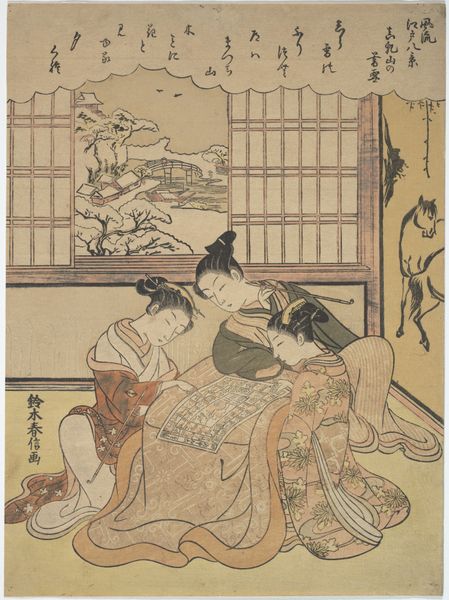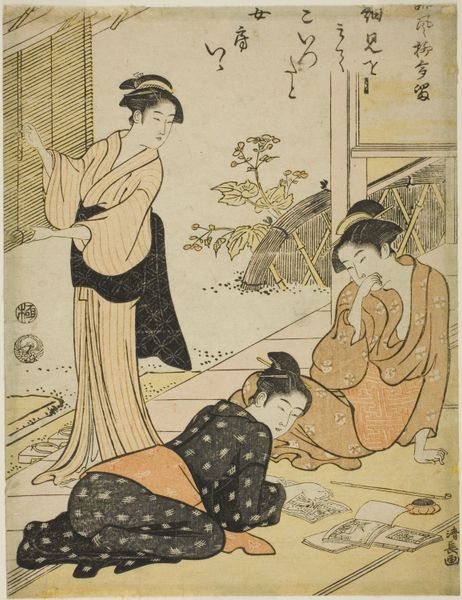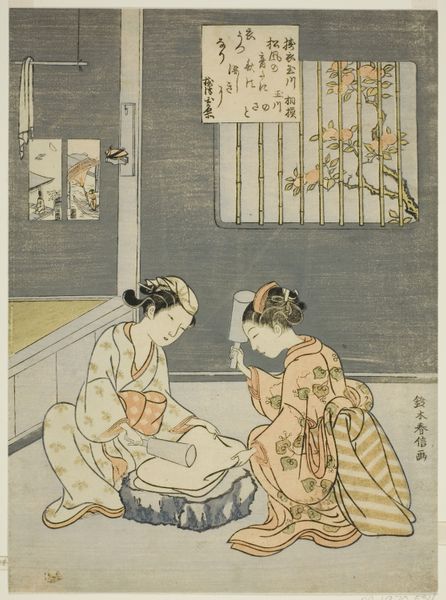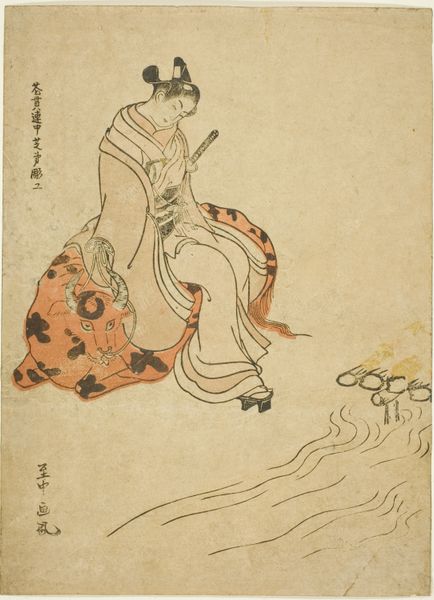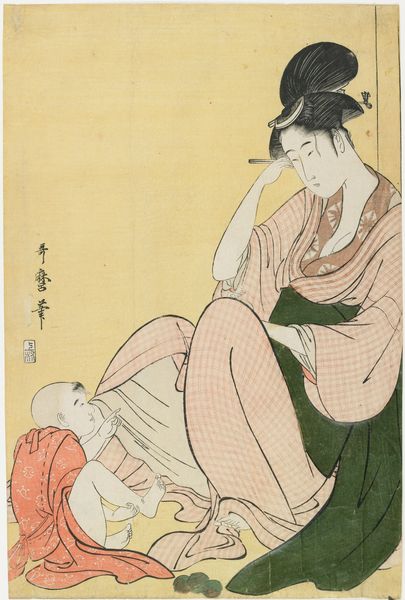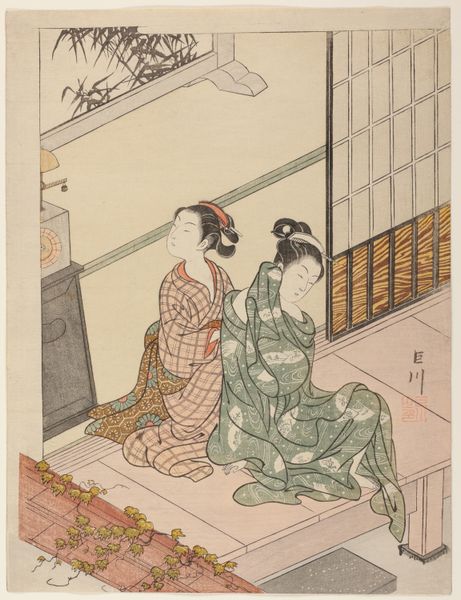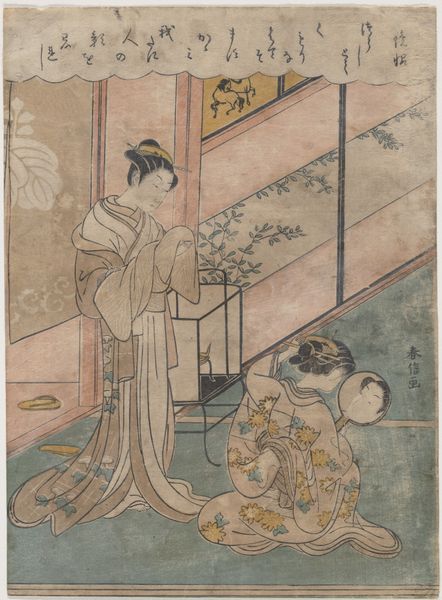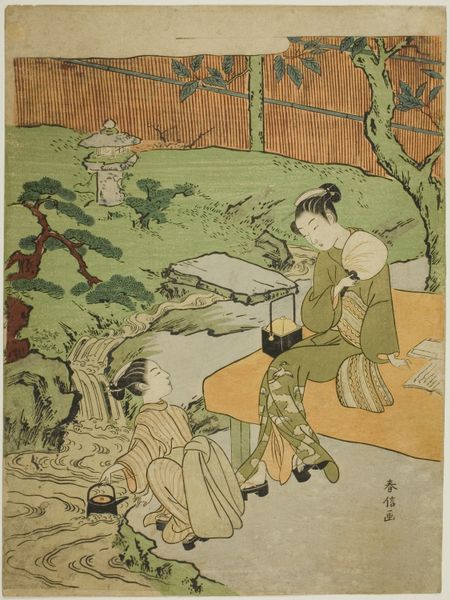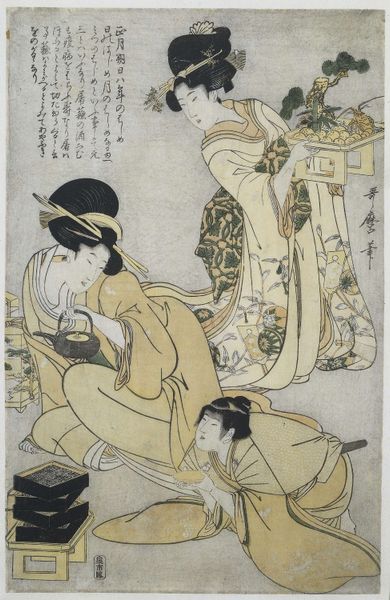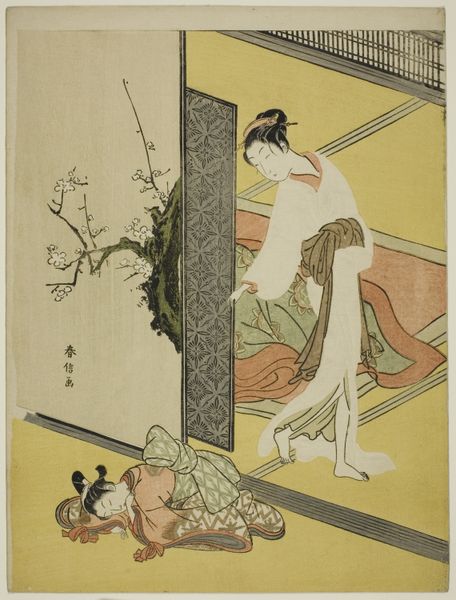
Lovers Playing the Same Fute (parody of Xuanzong and Yang Guifei) c. 1767
0:00
0:00
print, woodblock-print
#
portrait
# print
#
asian-art
#
ukiyo-e
#
figuration
#
woodblock-print
#
genre-painting
Dimensions: 26.8 × 19.7 cm (10 1/2 × 7 3/4 in.)
Copyright: Public Domain
Curator: This is Suzuki Harunobu's "Lovers Playing the Same Flute (parody of Xuanzong and Yang Guifei)," a woodblock print created around 1767, currently housed at the Art Institute of Chicago. Editor: My immediate reaction is one of understated elegance. The soft color palette and graceful lines evoke a sense of refined leisure, almost dreamlike. The composition is strikingly simple, but carefully balanced. Curator: Indeed. Harunobu's work often references classical literature and history. Here, he subtly reimagines the tale of Emperor Xuanzong and his concubine Yang Guifei, but with a contemporary Edo-period spin. This piece reflects the ukiyo-e tradition of depicting scenes from everyday life while layering social critique through parody. Editor: From a purely visual perspective, I'm fascinated by the spatial arrangement. The figures occupy the foreground, their elaborate kimonos a riot of intricate patterns and textures. Meanwhile, the background with the pond is simplified almost to abstraction. Notice the use of negative space—the way the blank areas define form and suggest depth. Curator: The artist cleverly employs the genre painting framework to subvert the imperial narrative, bringing a tale of love and power imbalances down to a more relatable, human scale. Consider, too, the societal implications. This print normalizes and perhaps celebrates same-sex affection during a period when social expressions were rigidly controlled. Editor: It is amazing how the lines define everything while they disappear sometimes. The contrast, how they emphasize each kimono pattern without suffocating the viewer—it's all expertly controlled. The interplay between line, color, and form is masterfully calibrated to guide the eye across the surface and make one circle through the figures. Curator: Furthermore, it makes one wonder about the social context. Who was consuming these prints? What did they take away from seeing this lighthearted revision of a historical account that critiqued power structures? Editor: Looking closely, you appreciate the technique in woodblock prints and how color influences lines in surprising ways. You get the mood from all those curves and subtle gradations! The artwork speaks volumes about its mastery of form and subtle aesthetic language. Curator: Absolutely. Harunobu invites us to contemplate gender, sexuality, class, and representation in 18th-century Japan. Editor: It certainly provides rich visual and theoretical material, both challenging and rewarding to interpret.
Comments
No comments
Be the first to comment and join the conversation on the ultimate creative platform.
